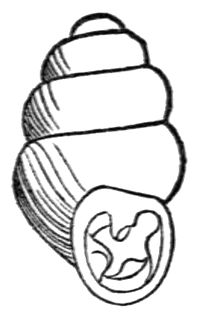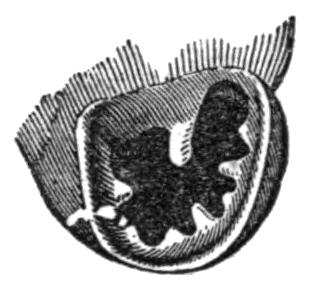| Neonesthes | |
|---|---|
 | |
| Cape Snaggletooth (N. capensis) | |
| Scientific classification | |
| Kingdom: | |
| Phylum: | |
| Class: | |
| Order: | |
| Family: | |
| Genus: | Neonesthes |
Neonesthes is a genus of barbeled dragonfish.
| Neonesthes | |
|---|---|
 | |
| Cape Snaggletooth (N. capensis) | |
| Scientific classification | |
| Kingdom: | |
| Phylum: | |
| Class: | |
| Order: | |
| Family: | |
| Genus: | Neonesthes |
Neonesthes is a genus of barbeled dragonfish.
There are currently two recognized species in this genus: [1]
Snaggletooth may refer to:

Stomiidae is a family of deep-sea ray-finned fish, including the barbeled dragonfishes. They are quite small, usually around 15 cm, up to 26 cm. These fish are apex predators and have enormous jaws filled with fang-like teeth. They are also able to hinge the neurocranium and upper-jaw system, which leads to the opening of the jaw to more than 100 degrees. This ability allows them to consume extremely large prey, often 50% greater than their standard length.
Neonesthes capensis, the Cape snaggletooth, is a lightfish of the family Stomiidae, found in all tropical and subtropical oceans except the north Pacific, at depths of between 70 and 1,500 meters. Its length is between 10 and 17 centimeters.

The snaggletooth shark, or fossil shark, is a species of weasel shark in the family Hemigaleidae, and the only extant member of the genus Hemipristis. It is found in the Indo-West Pacific, including the Red Sea, from southeast Africa to the Philippines, north to China, and south to Australia, at depths from 1 to 130 metres. This shark can be found near the bottom of the water column of coastal areas, but can be found at continental and insular shelves. Its length is up to 240 cm (7.87 ft). Despite being only vulnerable to extinction, this shark is very rarely seen.
Hemipristis is a genus of weasel sharks, family Hemigaleidae. It contains one extant species, the snaggletooth shark and several extinct species.
The weasel sharks are a family, the Hemigaleidae, of ground sharks found from the eastern Atlantic Ocean to the continental Indo-Pacific. They are found in shallow coastal waters to a depth of 100 m (330 ft).

Gastrocopta is a genus of minute air-breathing land snails, terrestrial pulmonate gastropod mollusks or micromollusks in the family Gastrocoptidae.

In biological classification, taxonomic rank is the relative level of a group of organisms in a taxonomic hierarchy. Examples of taxonomic ranks are species, genus, family, order, class, phylum, kingdom, domain, etc.

Snaggletooths or stareaters are any of a number of small, deep-sea stomiid fish in the genus Astronesthes. They possess a bioluminescent red chin barbel that the fish use as a lure to attract small prey into striking distance.
Gastrocopta pellucida is a species of minute air-breathing land snail, a terrestrial pulmonate gastropod mollusk or micromollusk in the family Vertiginidae, the vertigo snails.

Gastrocopta contracta, common name the bottleneck snaggletooth, is a species of very small air-breathing land snail, a terrestrial pulmonate gastropod mollusk in the family Vertiginidae, the whorl snails.

Gastrocopta pentodon, common name the comb snaggletooth, is a species of minute air-breathing land snail, a terrestrial pulmonate gastropod mollusk or micromollusk in the family Vertiginidae, the vertigo snails.

Hemipristis serra is an extinct species of weasel shark which existed during the Miocene epoch. It was described by Louis Agassiz in 1843. While today's snaggletooth shark is not very large or dangerous, Hemipristis serra, which lived in the Atlantic Ocean during the Oligocene and Miocene, was considerably larger than its modern-day relative and had much larger teeth. Its total length is estimated to be with 6 metres (20 ft) long. Marks made by the teeth of H. serra are often found on the bones of the manatee Metaxytherium leading some scientists to hypothesize that H. serra specialized in preying on these sirenians. In the Gatun Formation of Panama, H. serra was contemporary with pups of the large lamniform shark Otodus megalodon, and both it and the great hammerhead are theorized to have preyed on the pups of this larger shark due to their presence within the formation.
Rhabdospora is a genus assigned to cells found in a variety of fish. First reported in 1892, there has since been disagreement over whether Rhabdospora represents a parasite of the phylum Apicomplexa or a specialized fish cell.
Borostomias is a genus of barbeled dragonfishes.
Eupogonesthes xenicus, the Exotic snaggletooth, is a species of barbeled dragonfish found in the eastern Indian Ocean. This species grows to a length of 11.4 centimetres (4.5 in) SL. This species is the only known species in its genus.
Heterophotus ophistoma, the Wingfin snaggletooth, is a species of barbeled dragonfish found in oceans worldwide at depths of 790 to 1,420 metres. This species grows to a length of 35.6 centimetres (14.0 in) SL. This species is the only known species in its genus.
Rhadinesthes decimus, the Slender snaggletooth, is a species of barbeled dragonfish found in the ocean depths reaching to 4,900 metres (16,100 ft). This species grows to a length of 41.0 centimetres (16.1 in) SL. This species is the only known species in its genus.
Astronesthes richardsoni, or Richardson's snaggletooth, is a species of small, deep sea fish in the family Stomiidae. It occurs in the tropical western Atlantic Ocean, the Caribbean Sea and the Gulf of Mexico. First described by the Cuban zoologist Felipe Poey in 1852, it was named Chauliodus richardsoni in honour of the Scottish explorer and naturalist John Richardson. It was later transferred to the genus Astronesthes.